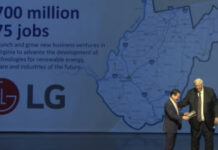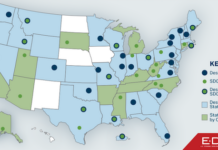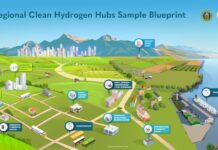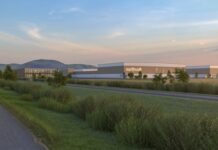Stardust Power Picks Oklahoma For Battery-Grade Lithium Refinery
Stardust could be eligible for up to $257M in state, federal economic incentives for the Muskogee facility. Plus, Oklahoma launches its new SITES Ready Program
Solenis, Port Of Virginia Make Progress In State
Solenis plans to build an 80,000-square-foot production facility, packaging facility, and tank farm in Suffolk, Virginia.
Toyota, Tesla, Scout Motors, Amazon Web Services Top 2023 Deals Of The Year
EV industry, data center investments took top honors in Business Facilities’ annual awards, which recognize significant corporate relocation and expansion investments.
LG Launches $700M Strategic Initiative To Grow Tech Ventures In West Virginia
LG NOVA projects expected to bring 275 jobs to West Virginia; spur growth of new technologies, investments and economic development; establish Appalachian Region innovation corridor.
Opportunity In Richland, Washington
City Of Richland Economic Development Manager Amanda Wallner discusses why this Pacific Northwest city provides a strategic location for companies across a number of industries.
11 Major U.S. Clean Energy Projects Announced Last Month
Businesses have announced more than 265 new clean energy projects in 41 states since August 2022, when the federal Inflation Reduction Act (IRA) was signed into law.
Why New York? A Q&A With Hope Knight, Empire State Development
Empire State Development President, CEO & Commissioner Hope Knight talks about how New York innovation and initiatives support growth in manufacturing, clean energy, and more.
In California, Innovation Economy Firms Receive $150M In Grants, Tax Credits
Recipients of the state's CalCompetes funding include companies developing and manufacturing electric aircraft, semiconductors, AI, and more.
Amazon, Alberta Wind Farm Sign Power-Purchase Agreement
Tech giant Amazon has signed a power-purchase agreement to operate a wind farm in Vulcan County, Alberta, Canada.
Westinghouse To Develop Clean Energy Technology In Pennsylvania
Westinghouse will invest at least $18 million to further develop its innovative eVinci™ transportable nuclear battery technology in Allegheny County, PA.
Array Technologies To Invest $50M In New Mexico Expansion
Global solar company Array Technologies will create 100 jobs at its new manufacturing campus in Bernalillo County, New Mexico.
EDA Announces 31 Tech Hubs Across U.S.
New Tech Hubs program will drive regional innovation and job creation by strengthening a region’s capacity to manufacture, commercialize, and deploy technology.
$7B Earmarked For America’s First Clean Hydrogen Hubs
Located across the U.S., seven Regional Clean Hydrogen Hubs (H2Hubs) will create jobs, strengthen nation’s energy security, and combat climate crisis.
Why Virginia? A Q&A With Secretary Caren Merrick
Caren Merrick, Virginia Secretary of Commerce and Trade, shares how the commonwealth's strategic ecosystems and strong talent pipeline offer opportunity to companies across many industries.
Construction Begins On Next-Gen Geothermal Project In Utah
Signaling a new era for enhanced geothermal energy, Fervo Energy is building the world’s largest next-gen geothermal project in southwest Utah.
Governor’s Report: Nevada Is Expanding Economic Reach
Governor Joe Lombardo discusses how a strategic location in the west and proactive programs propel business growth in Nevada.
Northvolt To Establish $5B Gigafactory In Quebec
The largest private investment in Quebec's history, Northvolt Six will host 60 GWh of annual cell manufacturing capacity with adjacent facilities for cathode active material production and battery recycling.
Nel Hydrogen Will Build $400M Gigafactory In Southeast Michigan
Norwegian hydrogen company Nel Hydrogen will build its automated gigafactory in Plymouth Township, Michigan, where it will create 517 jobs.
Li-Ion Battery Recycling Plant To Be Built In Oklahoma
At its first commercial-scale li-ion battery processing facility, Blue Whale Materials will create 90 jobs in Bartlesville, Oklahoma.
Silfab Solar Invests $150M In York County, SC
Silfab Solar, a leading North American solar panel manufacturer, will invest $150 million in South Carolina, creating 800 jobs.
































![[VIDEO] Get More for Your Business in Ardmore. Oklahoma](https://businessfacilities.com/wp-content/uploads/2024/02/maxresdefault-324x160.jpg)
